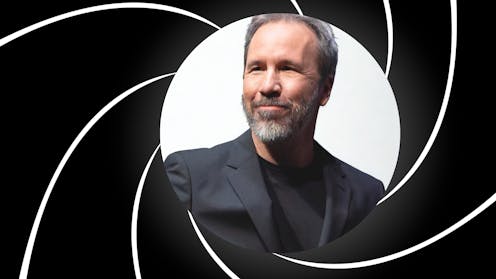Source: The Conversation – France (in French) – By George Kassar, Full-time Faculty, Research Associate, Performance Analyst, Ascencia Business School

La recherche en gestion de performance offre une gamme complète de pratiques managériales toxiques à appliquer sans modération pour faire fuir les talents les plus précieux. Si ces conseils sont à prendre au second degré, ces pratiques restent bien réelles dans la gestion quotidienne de certains managers.
Qui a dit que la principale ressource d’une entreprise, et son véritable avantage concurrentiel, résidait dans ses employés, leur talent ou leur motivation ?
Après tout, peut-être souhaitez-vous précisément vider vos bureaux, décourager durablement vos collaborateurs et saboter méthodiquement votre capital humain.
Dans ce cas, la recherche en gestion de performance vous offre généreusement tout ce dont vous avez besoin : une gamme complète de pratiques managériales toxiques à appliquer sans modération pour faire fuir les talents les plus précieux.
En fait, la gestion de la performance, issue des pratiques de rationalisation au début du XXe siècle, est devenue aujourd’hui un élément clé du management moderne. En théorie, elle permet d’orienter l’action des équipes, de clarifier les attentes et de contribuer au développement individuel. En pratique, si elle n’est pas mise en œuvre de manière adéquate, elle peut également devenir un formidable outil pour démotiver, épuiser et pousser au départ vos collaborateurs les plus précieux.
Voici comment :
Management par objectifs flous
Commencez par fixer des objectifs vagues, irréalistes ou contradictoires. Surtout, évitez de leur donner du sens ou de les relier à une stratégie claire, et évidemment ne pas leur assurer les ressources appropriées. Bref, adoptez les « vrais » objectifs SMART : Stressants, Mesurés arbitrairement, Ambigus, Répétés sans contexte, Totalement déconnectés du terrain !
Selon les recherches en psychologie organisationnelle, cette approche garantit anxiété, confusion et désengagement parmi vos équipes, augmentant significativement leur intention de quitter l’entreprise.
Abonnez-vous dès aujourd’hui !
Chaque lundi, recevez gratuitement des informations utiles pour votre carrière et tout ce qui concerne la vie de l’entreprise (stratégie, RH marketing, finance…).
Le silence est d’or
Éviter toute forme de dialogue et de communication. Ne donnez jamais de feedback. Et si vraiment vous ne pouvez pas l’éviter, faites-le rarement, de manière irrégulière, strictement détachée du travail, et portez-le plutôt sur une critique de la personne. L’absence d’un retour d’information régulier, axé sur les tâches et exploitable, laisse les employés dans l’incertitude et les surprend au moment de l’évaluation et mine progressivement leur engagement.
Plus subtilement encore, c’est la manière dont vos employés interprètent vos intentions, et le feedback que vous leur donnez, qui compte le plus. Attention, lorsqu’il est perçu comme ayant une intention constructive, il risque de renforcer la motivation à apprendre et l’engagement. Mais lorsque ce même feedback est perçu comme incité par des intérêts personnels du manager (attribution égoïste), il produit l’effet inverse : démotivation, repli et départ.
« Procès » d’évaluations de performance
Organisez des entretiens annuels où vous ne relevez que les erreurs et oubliez totalement les réussites ou les efforts invisibles. Soyez rigide, critique, et concentrez-vous uniquement sur les faiblesses. Prenez soin de vous attribuer tout le mérite lorsque l’équipe réussit – après tout, sans vous, rien n’aurait été possible. En revanche, lorsque les résultats ne sont pas à la hauteur, n’hésitez pas à pointer les erreurs, à individualiser la faute et à rappeler que « vous aviez pourtant prévenu ».
Ce type d’évaluation de performance, mieux vaut le qualifier de procès punitif, garantit une démotivation profonde et accélère la rotation des équipes.
À lire aussi :
Détruire une carrière professionnelle, nouvelle forme de harcèlement moral
Compétition interne poussée à l’extrême
Favorisez une culture de rivalité entre collègues : diffusez régulièrement des classements internes, récompensez uniquement les meilleurs, éliminer systématiquement les moins bien classés, dévaloriser l’importance de la coopération, et laisser la concurrence interne faire le reste. Après tout, ce sont les caractéristiques essentielles de la « célèbre » méthode que Jack Welch a popularisée chez General Electric.
Si vous remarquez un possible élan de motivation à court terme, ne vous inquiétez pas, les effets de la « Vitality Curve » de Jack Welch seront, à terme, beaucoup plus néfastes que bénéfiques. La féroce concurrence interne vous sera un excellent outil de détruire la confiance entre coéquipiers, de créer une atmosphère toxique durable et d’augmenter le nombre de départs volontaires.
Ignorez le bien-être : surtout, restez sourd
Nous avons déjà établi qu’il fallait éviter le feedback et tout dialogue. Mais si, par malheur, un échange survient, surtout n’écoutez pas les plaintes ni les signaux d’alerte liés au stress ou à l’épuisement. Ne proposez aucun soutien, aucun accompagnement, et bien sûr, ignorez totalement le droit à la déconnexion.
En négligeant la santé mentale et en refusant d’aider vos employés à trouver du sens à leur travail – notamment lorsqu’ils effectuent des tâches perçues comme ingrates ou difficiles – vous augmentez directement l’éventualité de burn-out et d’absentéisme chronique
De plus, privilégiez systématiquement des primes de rémunération très variables et mal conçues : cela renforcera l’instabilité salariale des employés et tuera ce qui reste d’engagement.
L’art d’user sans bruit
Envie d’aller plus loin dans l’art de faire fuir vos équipes ? Inspirez-vous de ce que la recherche classe parmi les trois grandes formes de violence managériale. Il s’agit de pratiques souvent banalisées, telles que micro-gestion, pression continue, absence de reconnaissance ou isolement, qui génèrent une souffrance durable. Ces comportements, parfois invisibles mais répétés, finissent par user les salariés en profondeur, jusqu’à les pousser à décrocher, mentalement puis physiquement jusqu’à rupture.
Évidemment, ces conseils sont à prendre au second degré !
Pourtant, les pratiques toxiques décrites ici restent malheureusement bien réelles dans la gestion quotidienne de certains managers. Si l’objectif est véritablement de retenir les talents et d’assurer le succès durable d’une entreprise, il devient indispensable d’orienter la gestion de la performance autour du sens, de l’équité et du développement authentique du potentiel humain.
![]()
George Kassar ne travaille pas, ne conseille pas, ne possède pas de parts, ne reçoit pas de fonds d’une organisation qui pourrait tirer profit de cet article, et n’a déclaré aucune autre affiliation que son organisme de recherche.
– ref. Votre manager est-il toxique ? Six signes qui ne trompent pas… – https://theconversation.com/votre-manager-est-il-toxique-six-signes-qui-ne-trompent-pas-260438






